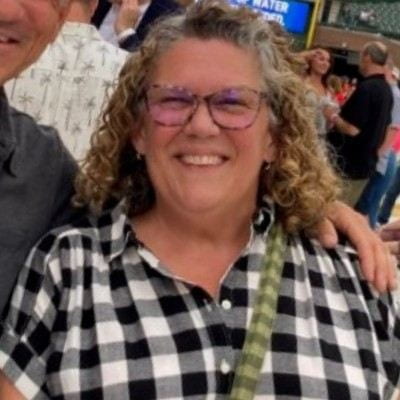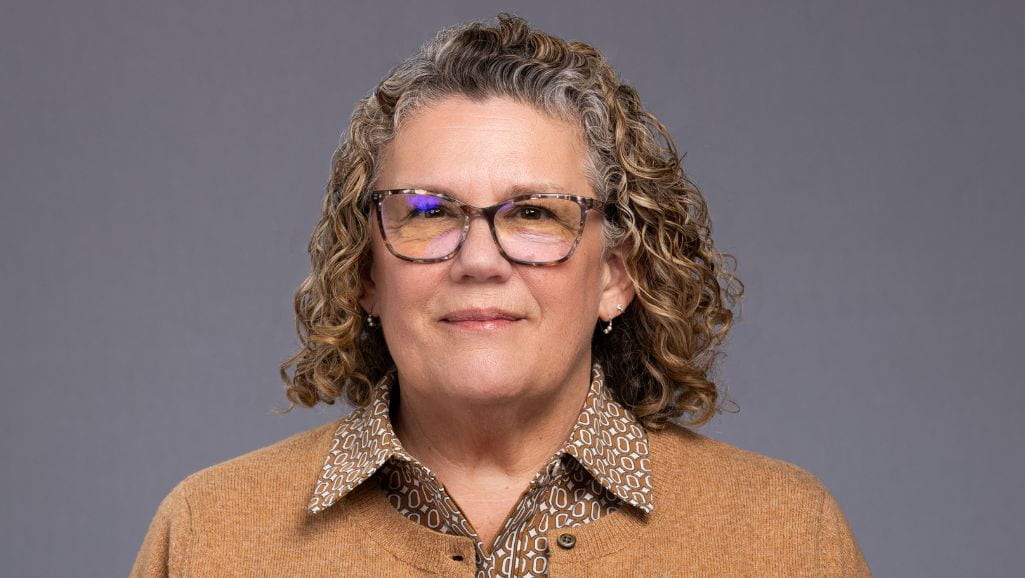Lisa Kuklinski, MA, Director of Community Research Partnerships
How did you become interested in health equity?
My main work over the last 20 years has been in building and operating permanent supportive housing, which is an intervention that ends homelessness and includes wraparound supportive services so that people have help with all the aspects of their newly housed lives. Through that work (with Mercy Housing and Heartland Alliance), I was able to witness vast health disparities among people experiencing homelessness. The most deeply disturbing to me was especially among two groups of people: those who had served in the military and women. I was working with people who had experienced chronic homelessness, which is homelessness of more than a year, folks who also have some disability, whether that’s physical disability, chronic illness, or mental health disabilities. Before the ACA passed, adults, especially single men and single women without children, were not eligible for Medicaid. Adult single men who had served in the military should have been eligible for health care through the VA but in many cases were not because of their discharge status. There are many levels of discharge between honorable discharge and dishonorable discharge. A minor violation, being caught breaking the rules, could disqualify a veteran for life from receiving healthcare. We worked on a very long and arduous campaign to convince the VA to admit people to the health care system who had experienced a less than honorable but not dishonorable discharge.
Through that policy campaign and working in partnership with people directly experiencing lack of health care, I saw the injustice of people not being able to access health care and what a great contributor it was to homelessness. As people suffered from chronic illness, they became further and further in debt and less and less able to access health care. Women often suffer in a very different, and I think more acute, way from the disparities that lead to homelessness: in addition to the trauma of homelessness, often women came to homelessness having had their children taken away from them, having had to find people to take care of their children, or suffering extreme domestic violence. Almost all of the people I worked with were African-Americans.
Following an advocacy campaign with other people on a national level to work with the VA on this issue, that policy has been changed. It was a big victory, especially for men who had served in Vietnam. Many of them had been on two or three tours, so they had been in Vietnam for six years. Often because they came in at a lower level of the military, they had served in the most violence exposed roles. In addition to being economically poor when they entered–from economically poor geographic areas, neighborhoods, and families–they were assigned to some of the most trauma-inducing roles, so many had both physical and mental health challenges and had no access to health care.
I could imagine that if you were in the most violence exposed areas of the war you might be more likely to commit some kind of violation yourself.
Yes, many were self-medicating using marijuana or alcohol, and those were the violations that cause them to be banned for life from medical services. They would appear on our doorstep to get permanent supportive housing with no teeth, with chronic illnesses like asthma, all of the illnesses that we know now are illnesses of poverty. Sometimes their whole first one to two years in housing were exclusively devoted to going to the doctor and trying to get new teeth…I can’t tell you how many people had no teeth. And at the time Medicaid didn’t cover any dental care. Teeth in particular were also often an indicator of heart issues as well. It was heart-wrenching. We had so many people testify, and we really did change the way that the veterans system was contributing massively to the number of homeless.
Currently the VA system to help people experiencing homelessness is far more advanced than the rest of the homelessness system because they turned in a different direction and started to really deal with the issues that were feeding homelessness. When I first started working with homeless people in 2001, 30% of homeless people were veterans–that is not true today. So that campaign alone was one of the biggest impacts that we’ve had as a system on homelessness in this country, and it was largely due to disparities in health. The ACA also made a huge difference. In a year, we had everyone signed up for healthcare–whether they used it and how they got there and all of that is another story…
How did you start working with homeless populations?
I was working as a community organizer, mostly on police reform. As a result of that campaign Chicago now has what they call CAPS [Chicago Alternative Policing Strategy]–but it started as a community movement to reform the way police worked with the community. After that reform, the police were required to meet with the community and ideally work in hyperlocal campaigns to mitigate crime issues in neighborhoods. Once it was taken on by the institution itself, it morphed into a less grassroots movement.
When I was working with community organizations around the city in an organized campaign to change Chicago’s policing, I was living and working in Uptown, and I met people in the neighborhood who were working to end homelessness by providing the new intervention of permanent supportive housing by converting single room occupancy hotels. Those daily/weekly/monthly transient hotels were just horrible and nasty and completely unjust in the way that they charged people for rent. Often people would pay weekly in cash for their rent, and it would often add up to more than they would have been paying on a monthly basis were they able to sign a lease and put down a security deposit. So there were these amazing social justice people working on permanent supportive housing in Uptown, and I was recruited to join them. I worked in community and government affairs as well as tenant organizing, so that was sort of my entree into the world of ending homelessness.
Are you from Chicago?
All of my family on my dad’s side is from Bucktown/Wicker Park because from the 1880s or so until the 1960s-70s, it was a Polish immigrant neighborhood. My father’s mother’s side had a candy store in the neighborhood and my father’s father was a pharmacist and had a drugstore, so they were often sort of the center of the community. Because my dad was Kennedy generation, they left and went out to the ‘burbs, so I grew up in Glen Ellyn, but once I graduated college I came to live in the city and have lived here ever since.
What are you working on at C3EN?
I am a senior project manager and the Director of Community Research Partnerships at C3EN. I will be working on building the Community-Based Research Network as a sustainable coalition of community organizations that are interested in and prepared to work with researchers to partner on issues of concern to the community. One of the things we’re trying to do is change the cycle of how research works. Instead of it being exclusively initiated by researchers who are driven by grant-funded opportunities, we’re trying to build a network of community organizations that will drive research from the community to partner with researchers who are interested in working with community and want to work on health disparities or health inequity issues and work together toward grants that fund that work. Instead of researchers saying, “I want to work with people with asthma; can you find me people with asthma to work with?” we ask community-based organizations including Westside Health Authority and Greater Auburn Gresham Development Corporation, “What are your constituents concerned about?”
What are you most proud of in your career?
When I was working for Mercy Housing (now Mercy Housing Lakefront), a national affordable housing organization that was founded in the 1980s by 12 or 13 religious orders of sisters active in the world working on social justice to grow the industry of of nonprofit affordable housing, folks from Milwaukee called and said, “We want to replicate what you’re doing in Chicago, building permanent supportive housing to end homelessness in Milwaukee, as well.” So I went up and did a hundred one-on-one interviews in my first ninety days, got to know the community, the system of homeless service providers and the government, especially local government because sometimes that’s who fights affordable housing.
Over the next four years, I worked on people’s values and put together the right folks to build Milwaukee’s very first at-scale permanent supportive housing, 91 units that combined an old neighborhood hospital that we rehabbed, plus a new building. It was a $14 million project which not only housed 30% of the chronically homeless people in Milwaukee on the day that it opened and revitalized the neighborhood. It was the best day of my life.
I just did things that I didn’t know I wasn’t supposed to do, went to the United States Senator’s office with people from the community and said, “Y’all need to do something. We need money to do this,” organized churches to come to the city hall hearings on zoning. Normally city and county never worked together because it was a Republican and a Democrat–Scott Walker from Wisconsin was the head of the county at the time, and and the mayor was a former Democratic congressman–they didn’t even talk to each other. I brought both to the groundbreaking and made them shake hands and put on construction hats. Sometimes being an outsider allows you to say you just didn’t know better.
Do you have any fun facts?
I love to be outdoors–I’m a huge fan of the national parks and make it a point to get to a national park or national lakeshore every single year. As a kid that was what we did as a family–we went camping in national parks as our family vacation. I love cycling–I do a lot of long solo bike rides in the summer. I grew up in a family with no girls, so as a result I am a little bit tough and a little bit tomboy and a whole lot of feminist!


